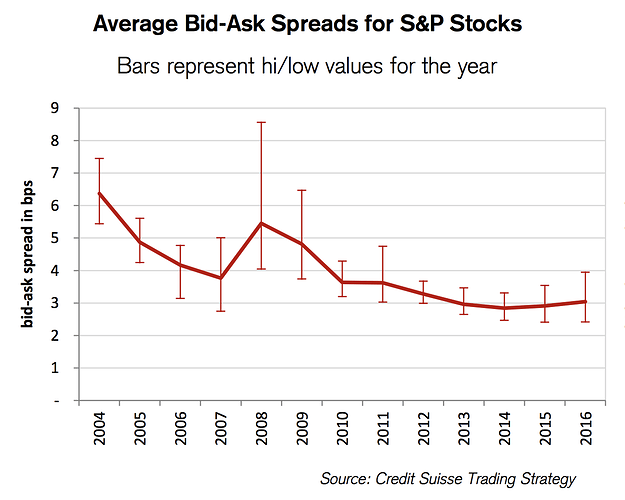The default fee model for exchanges to use is one where some fee, eg. 0.30%, is charged to both the buyer and the seller of an order. However, some exchanges use a newer model called “maker-taker fees”, where the party that posted the order earlier (the “maker”) pays a lower (or even zero or negative) fee, and the party that posted the order that claimed the other order and caused the exchange to take place (the “taker”) pays a higher fee.
I can argue that such a model is actually economically equivalent to a model where fees are even. Suppose that, in universe A, there is an exchange with a 0.30% fee to both sides, where the buyers and sellers are willing to bid $1000 and ask $1010. If someone wants to come in and sell, then they would get $997 and the buyer would pay $1003, and if someone wants to come in and buy, they would pay $1013 and the seller would get $1007.
Now, consider universe B, where there is a 0.60% taker fee and a zero maker fee. Rational market participants do not care about numbers displayed on a screen; they care about how much money they ultimately pay or get. The sellers that bid $1000 in universe A were clearly willing to buy under the terms that they pay $1003. Hence, in universe B, they have the same preferences, and so they would be willing to bid $1003, as there are no fees for makers. Similarly, the buyers were willing to sell under the terms that they get $1007. Hence, they would be willing to ask $1007. Now, the spread is nominally smaller ($1003-1007 instead of $1000-1010), but in reality, someone coming in to sell would get $1003 - 0.60% = $997, and someone coming in to buy would get $1007 + 0.60% = $1013. So the de facto situation is unchanged.
So this leads be to believe that any differences between maker-taker fees and standard fees are entirely behavioral and cosmetic in nature, and not economic; from a pure economic point of view, both costs and benefits of switching from one model to the other are zero to all parties.
I read the SEC memo on maker-taker fees and as far as I can tell it does not address this.
Is my logic correct? Are there any flaws in my reasoning?
Edit: here’s another way of seeing this. Imagine in universe C there was an exchange with 0.30% fees, but where the interface was modified so that creating a bid order at x actually created an order at x + 0.3%, and creating an ask order actually created an order at x - 0.3%. Hence, when someone claims an order, they would pay a 0.6% “fee” relative to the amount inserted into the textbox by the order creator, and the order creator would pay a 0.3% fee based on a rate 0.3% more favorable than what they inserted into the textbox, so their “perceived fee” would be zero. Hence, a maker-taker fee model is isomorphic to a distortion in the user interface, and it’s clear to see that if traders were faced with a distortion in the user interface as described above, they would simply mentally compensate for it, typing in $1000 when they mean to make a bid order at $1003, etc, and so this should happen with a maker-taker fee model as well.

